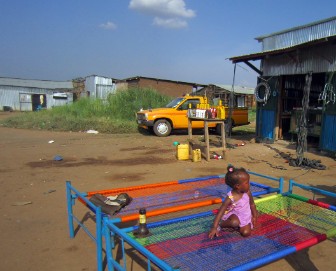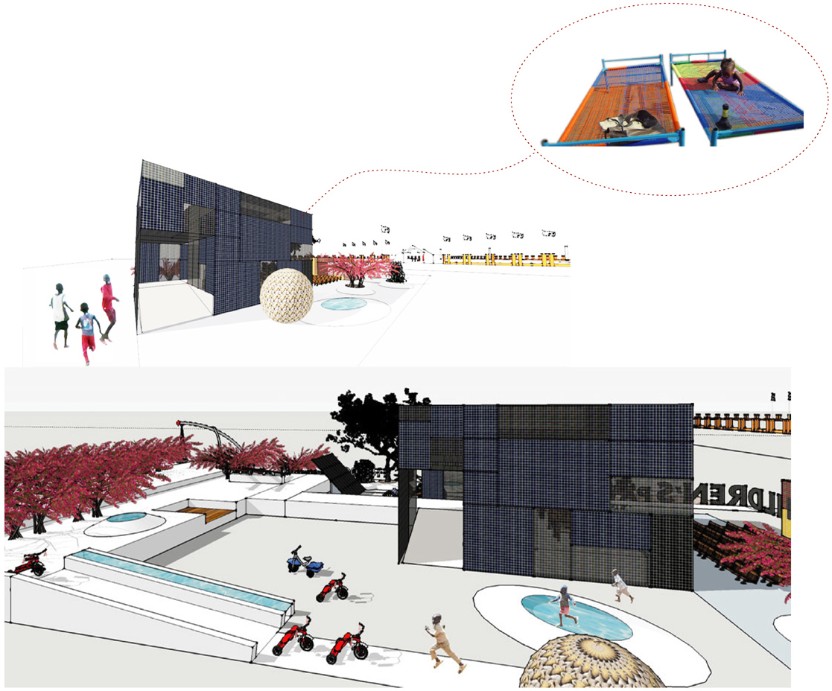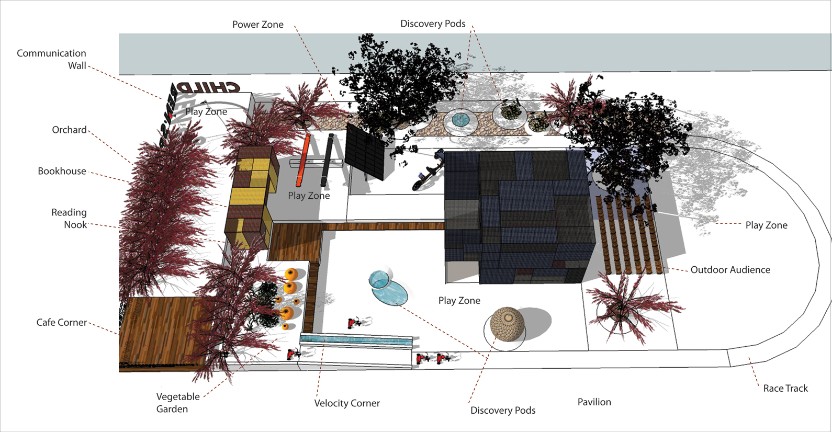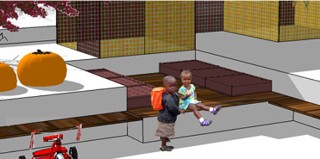Lighthearted and fun colors and fresh interpretations of local aesthetics will be used throughout the Children’s Pavilion and Interactive Landscape. The Pavilion will enlist the skill of the country’s extraordinary craftspeople and existing industrial businesses. It will be cost effective and visually memorable, a tangible expression of the country’s duty to invest it its children. |
 |
|||||
DESIGN APPROACH PAVILION The Children's Pavilion and Interactive Landscape references the style and elements of the community village. Inside and outside spaces merge and the plan is flexible enough to accommodate a variey of activities. Rather than solid block walls, panels of painted metal and colored string form the enclosure for the Pavilion. This ensures lots of ventilation and allows children to peer into the gardens and play areas beyond. Nothing wrong with a little daydreaming! It also maximizes natural light. The technique of weaving string on painted metal frames is ubiquitous on beds in South Sudan (and easy to replicate!) and makes for happy, vibrant surfaces that can be oriented horizontally and vertically. Children are already familiar with this aesthetic and have intimate exposure with it at home. No strange scary beasts here!  Woven around a simple volume, the colored string makes the Pavilion a safe beacon in a rapidly changing and very challenging urban environment. An open plan accommodates activities such as art, music, theatre, film and story-telling and can be transformed into a performance stage to entertain audiences in the garden.
INTERACTIVE LANDSCAPE Surrounding the Pavilion is an Interactive Landscape complete with terraces, slides, swings, lots of things to climb on, reading and resting nooks, a small orchard, a racetrack and an outdoor kiln for firing the clay things children create from their earth. Discovery pods dot the grounds and provide children with immediate opportunities to experience concepts such as reflection, contrast, velocity and balance. A cafe is tucked into the shade of the orchard and solar panels on the roof of the Pavilion and at ground level teach children about the power of the sun. Stone from the mountain crushed manually by local rockcrushers is spread around the site to assist in land drainage and reduction of dust, and an enormous sculptural sphere teaches children about scale, shape and the beauty and temperature of natural materials. A Communication Wall rings round the landscape, with oversized letters kids can climb on and through and inspirational sayings in various South Sudanese Languages and English. For the planting, we'll work closely with the State Nursery by the Nile to select seedlings to plant in the orchard. We are committed to ensuring that all spaces are accessible. 
 LOCATION The orange wall in the background of the top two images of the Pavilion defines the boundaries of the Dr. John Garang Masoleum, indicating our intention to locate the Pavilion as close to if not IN the heart of the city next to other significant cultural spaces. Initially, a Pavilion is slated to be built in Juba, the capital city of South Sudan in Central Equatoria State. As funding permits, we'll build more in other states. If you would like a Pavilion in your State, jot us a line and we'll see how we can work together!
|
||||||

